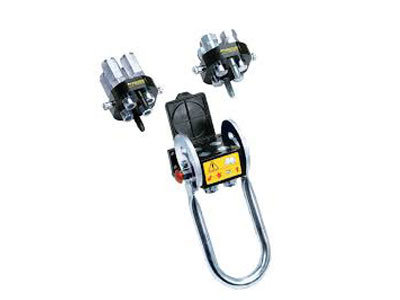How Do Pneumatics Work Step By Step?
Key Takeaway
Pneumatic systems work by using compressed air to control and transmit energy. First, an air compressor reduces the air’s volume and increases its pressure. The air is then filtered to remove any impurities, ensuring clean airflow.
Next, the compressed air is stored in an air receiver, which helps cool and smooth its flow. Valves control the air’s flow and regulate the pressure as it moves through pipes to the pneumatic components. These components, such as cylinders or grippers, then convert the compressed air’s energy into mechanical motion. Finally, the components perform the desired action, like moving, lifting, or pushing. Pneumatic systems are widely used in automation for their efficiency, ability to absorb shock, and cost-effectiveness compared to hydraulic systems.
Introduction to Pneumatic Systems and Their Components
Pneumatic systems are built around the use of compressed air as a power source. The basic components of a pneumatic system include:
Air Compressor: Generates and compresses air for use in the system.
Storage Tank: Stores compressed air, ensuring a consistent supply.
Control Valves: Direct and regulate airflow based on the system’s requirements.
Actuators: Convert the energy from compressed air into mechanical motion, such as linear or rotary movement.
Pipes and Hoses: Transport compressed air from the compressor to the actuators and other components.
These components work together to deliver motion or force in a controlled and efficient manner. Pneumatics is popular for its simplicity, making it easier to design, operate, and maintain systems for a variety of applications.

Step 1: Generating and Storing Compressed Air
The first step in a pneumatic system is generating compressed air. This begins with an air compressor, which draws in ambient air and compresses it to a specific pressure level.
There are different types of air compressors, including reciprocating, rotary screw, and centrifugal compressors. The choice depends on the required airflow and pressure. For example, a reciprocating compressor is suitable for small-scale operations, while a rotary screw compressor is used in high-demand industrial applications.
Once compressed, the air is stored in a storage tank or reservoir. This tank serves as a buffer, ensuring that there is a steady supply of air available even during high-demand periods. The air in the tank is kept at a predetermined pressure level, ready to power the system when needed.
This step sets the foundation for the entire pneumatic process, ensuring that the system has a consistent and reliable power source.
Generating and Storing Compressed Air H2: Step 2: Regulating Air Pressure and Flow
The next step involves regulating the pressure and flow of the compressed air. This is critical for ensuring that the system operates efficiently and safely.
Pressure regulators are used to maintain the air pressure at the desired level. Too much pressure can damage components or lead to unsafe operation, while too little pressure may result in insufficient force or motion. Regulators allow engineers to adjust the pressure according to the specific requirements of the application.
Flow control valves manage the speed and volume of air delivered to the actuators. By controlling the rate of airflow, these valves ensure smooth and precise motion. For instance, in an assembly line, the speed of a pneumatic cylinder can be adjusted to match the production pace.
Proper regulation of pressure and flow ensures that the system operates within its optimal parameters, enhancing efficiency and extending the lifespan of the components.
Step 2: Regulating Air Pressure and Flow H2: Step 3: Directing Air Through Control Valves
Control valves are the brain of a pneumatic system, directing the compressed air to the desired location and determining its path. These valves open, close, or redirect airflow based on signals from the control system.
There are several types of control valves, including:
Directional Control Valves: Direct air to specific actuators, enabling motion in the desired direction.
Check Valves: Allow airflow in one direction while preventing backflow.
Proportional Valves: Precisely control the amount of air delivered, ensuring fine-tuned motion.
In automated systems, these valves are often controlled by solenoids, which are electrically operated. For example, when a sensor detects an object on a conveyor belt, it sends a signal to a solenoid valve, which then directs air to move a pneumatic cylinder for sorting or positioning.
By efficiently managing the flow and direction of air, control valves ensure that pneumatic systems operate with precision and reliability.
Regulating Air Pressure and Flow H2: Step 3: Directing Air Through Control Valves H2: Step 4: Actuation and Motion Generation
The final step is where the magic happens: actuation and motion generation. This is the point where compressed air is converted into mechanical motion by the actuators.
There are two primary types of motion in pneumatic systems:
Linear Motion: Achieved through pneumatic cylinders. The compressed air pushes a piston inside the cylinder, creating straight-line motion. This is commonly used for clamping, lifting, or pushing tasks.
Rotary Motion: Generated by rotary actuators or air motors. These devices convert compressed air into rotational movement, suitable for applications like turning valves or driving conveyor belts.
The performance of the actuator depends on factors such as pressure, airflow, and load. For example, higher pressure results in greater force, while precise airflow control ensures smooth and accurate motion.
At this stage, the pneumatic system completes its function, delivering motion or force for the intended task.
Conclusion
Pneumatic systems work step by step, starting from generating and storing compressed air to regulating, directing, and finally using it for actuation. Each step plays a vital role in ensuring the efficiency and reliability of the system.
For engineers, understanding the step-by-step operation of pneumatics is key to designing and maintaining systems that meet the demands of modern automation. With their simplicity, adaptability, and cost-effectiveness, pneumatic systems remain an essential tool in industrial applications.

